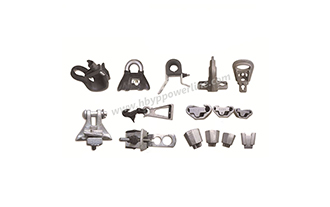Although it is still found that various alternative cable technologies-from gas insulation to oil-filled-are used worldwide-cross-linked polyethylene types have dominated new applications since the late 1980s. At the same time, these XLPE cable accessories have undergone considerable development and improvement during this period, especially in the past decade. For example, the first-generation accessories were filled with liquid, but today are more "environmentally friendly", and dry types are gaining preference.
Other features currently required for Cable Fittings include flexibility and ease of operation. For example, terminals for GIS or transformer applications are usually installed on-site, which means that the GIS or transformer must be completed and tested there-which is not always convenient. The recently available pluggable terminals eliminate the need for additional field testing and also provide installation advantages-independent of GIS or transformers that only need to be equipped with pre-installed sockets. The customer can then decide at a later stage of the project whether the cable or overhead line termination is more suitable.
Pluggable bushings for overhead line connections and more compact pluggable surge arresters are now available, and connections can be made at every cable position-whether it is horizontal, vertical, or somewhere in between.
The "core" of the pluggable connector system is the socket, which must be able to provide on-site control and be designed to meet the requirements of different applications. Although it will be placed in GIS and transformers, the socket runs in oil or SF6 with different dielectric constant factors. Therefore, depending on the application, the design of the field control element must be able to cover a range of different field strengths.
The future development of cables will focus on higher voltages, larger cross-sections, and new applications. The challenge here is that although the cable can already provide a voltage of up to 800 kV, the production, transportation, and handling of this voltage are very demanding. Achieving increased current capacity will require the cable conductor cross-section to increase from 2500mm² to 3000mm² or even higher.
The trend of renewable energy is also driving the growing demand for DC cable connections up to 300 kV to connect offshore wind farms to the grid. Accessories for such applications will require different material properties, and manufacturers must obtain relevant field experience to develop products suitable for this emerging market.

Cable Fittings
The trend of Overhead Line Fittings
Here, the inner aluminum conductor is surrounded by a graded layer made of conductive polyethylene. The main insulating layer and the outer conductive graded layer are made of polyethylene, while the outer conductor is covered by an outer sleeve.
The use of medium and high voltage cables of different lengths requires them to be connected and integrated into substations and overhead lines. This is the main application for cable joints and terminations.
Whenever a cable is connected to an overhead line or electrical equipment, the outer conductor and classification layer must be removed, and the cable insulation layer is covered by the terminal. The main tasks terminated in this regard include:
• Grading the electric field at the end of the removed outer layer;
• Cover the polymer insulation layer;
• Provide the external creepage distance required to service environmental pollution conditions.
At the MV level, the terminals are almost entirely made of polymers (such as EPDM and silicone) for decades, and similar polymer shell transitions seem to be a trend for higher voltages. Silicone shell high-voltage terminals have many advantages over porcelain, including higher safety, lower environmental risk, and faster installation speed. For example, depending on the voltage level, the time required to install such a terminal is estimated to be 20% less than a porcelain case.
In terms of MV terminals, there has been a stable design improvement process for many years, resulting in more cost-effective products with a slimmer profile. Similar advances in field classification technology are expected to lead to thinner HV terminals
But cables are not only connected to overhead lines and other installations. Usually, the connection is another cable, such as when a damaged part must be repaired or a branch needs to be made. This can be done using different types of joints, the main functions of which include:
• Provide proper insulation, especially in terms of radial electric fields;
•Classify the electric field at the end of the outer layer of the cable;
• Cover the connector while still providing the required mechanical strength.
New, compact and more cost-effective solutions can also be found in the field of cable glands.
As in the case of cable terminations, the current potential for faster and lower-cost installation is also driving the development of pre-molded connectors for HV applications. These are increasingly replacing prefabricated joints because there are fewer components and include built-in compression forces, eliminating the need for separate compression equipment on site. There are also fewer parts, which makes production costs lower.
In addition to the development of these types of terminals and connectors, the third type of cable accessory-the connector-now also offers improved and more cost-effective cable solutions. Connectors are used to plug cables into electrical equipment, such as switchgear, transformers, measuring equipment, etc. The precise mounting part of molded silicone is connected to the epoxy counterpart to achieve a safe and reliable connection, which can be quickly separated when necessary.
The number of connector designs and additional auxiliary equipment is very extensive. For example, plug-in arresters can be installed on ground lightning pulses, and this technology can even be used to produce busbar connectors.
+86 319 878 9350
+86 156 1304 7999
+86 319 878 9350
NanYan, DongHuan Road, Shahe, Hebei China
Copyright © Hebei Yipeng Line Equipment Co., Ltd. All Rights Reserved. | Sitemap Powered By 
